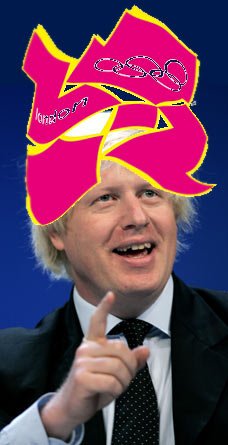
This column first appeared on RimoftheWorld.net on Nov. 9, 2009.
Because there were two girls named Kathy in Mrs. Dale’s kindergarten class, my mother agreed to let everyone call me Kathy Ann. The horror of it haunts me to this day.
Don’t get me wrong. Ann is a lovely name. Not only is it my middle name, but it’s the name of two of my favorite aunts. But my weak bladder, coupled with my classmates’ irritating ability to rhyme, produced a moniker that took me a long time to shake…Kathy Ann in the Can. In fact, the nickname stuck until we moved to another school district when I was in sixth grade.
When it comes to people and business, for better or worse, branding happens. And it doesn’t take much to get people to react to an organization’s emblem. Take the controversial 2012 Olympic logo, created at a staggering cost of 400,000 pounds. The image drew fire from a group called Epilepsy Action, which said that a video promoting the logo triggers migraines, epileptic fits and vomiting. The International Olympic Committee is set to investigate the logo which politicians say is childish and “looks like Boris Johnson’s hair.
Although causing people to puke is rarely the objective in professional trademark development, some believe there is no such thing as negative publicity. So, in that regard, the London Olympic logo designer’s efforts were successful.
A more conventional approach would be to create a logo that is:
- Simple
- Attractive
- Eye-catching
- Instantly recognizable
Some famous logos that fill the bill include Google, Starbucks, Coca-Cola, Fed-Ex, and McDonalds, whose images you most likely pictured even as you read their names. The reason you recognize these brands, however, isn’t just because their logos are great. Superior products, excellent service and aggressive marketing help. Let’s face it, if your company sucks, coming up with an amazing image for it is lipstick on a pig.
But for a credible organization, finding the right symbol can mean the difference between obscurity and notoriety. This is especially true in the Internet age, where deep pockets to pay for full-color brochures and slick press packets are no longer necessary. Anyone with a computer and a low resolution, jpeg version of their logo can upload it everywhere from A1-Webmarks to Zaadz.com.
But commissioning a classic design can come at a hefty price. So how do you to produce an iconic logo if you’re on a budget? Whatever the price point, you have several options.
- For Free—if you have no money with which to build your brand, proceed with caution. Like it or not, the logo you choose today will be with your firm for years to come. Also, unless your business is graphic design or fine art, don’t buy do-it-yourself logo software in an ill-fated attempt to craft your own. Having access to a logo program won’t make you an artist any more than owning a calculator will turn you into a mathematician.
When money is tight, less is more. So try to find a nice, clean, clear font for your company name and then quit while you’re ahead. Avoid the temptation to add clipart to the mix. Also, when choosing typeface, skip Script and Old English, unless you’re shooting for an Addams-Family vibe.
- On a Budget—while I generally caution clients against ordering logos online, some companies do a respectable job for under $200. The problem is that, when left to their own devices, many entrepreneurs will ask their Internet designer to place their company name inside a blue and red oval, without realizing they like the look because they’ve seen it on cans of Bud Lite.
- The Sky’s the Limit—if you are in the enviable position of actually having money in your marketing budget, don’t skimp on the cornerstone of business communication. Find someone you trust and let them do what they do best so you can do what you do best. The right professional can help you define your unique sales proposition so your logo not only looks great and conveys your message to the intended target, but does so without inducing nausea.
